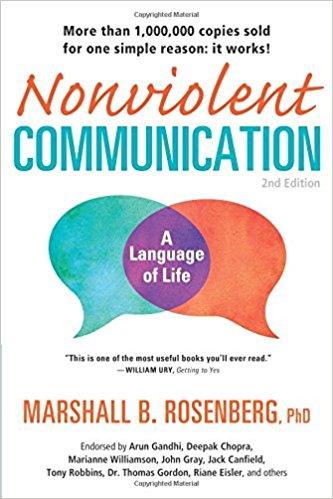Nonviolent Communication Summary

3 min read ⌚
 A Language of Life
A Language of Life
“Nonviolent Communication” can help you stay true to yourself, and use compassion to build and maintain strong and healthy relationships.
About Marshall B. Rosenberg
 Marshall B. Rosenberg, Ph.D. (1934-2015) was an author and the founder of the Centre for Nonviolent Communication.
Marshall B. Rosenberg, Ph.D. (1934-2015) was an author and the founder of the Centre for Nonviolent Communication.
“Nonviolent Communication PDF Summary”
Every day we are in contact with various people.
We communicate with our colleagues, with our families, with our friends.
However, not rarely, many of those communications end badly, letting irrational conflicts to build up and destroy the conversation.
This is far from the way that it should be.
Luckily, it does not have to be like that, since it is possible to avoid such tensions and conflicts.
Learning how to communicate well, and nonviolently, is important because our whole society is built on our communication skills.
However, we somehow do not understand this and use language that undermines the flow of communication, and that can sometimes even destroy a whole relationship.
In fact, studies show that there is even a correlation between words and violence.
Different types of communication can happen.
One of them is the life-alienating communication when we build up walls with our words and create gaps between other people and us.
We do that by using various devices such as, let’s say, moralistic judgment. Insults, labels, and criticism all belong to the group of moralistic judgments, and they are used to imply that the other system acts opposite of your own value system.
But such language and devices can only harm. Compassionate language, on the other hand, can connect people despite their differences, instead of pulling them apart.
We do not say that at times you will not have a negative thought for which you will be right. However, the way you express it is crucial.
So, how can you express your negative thoughts in a positive way?
This is where the method called nonviolent communication (NVC) comes into play.
It is a method that will allow you to approach your feelings and stances clearly, and be more aware of the words you and others say.
This takes us to one of the most important parts of nonviolent communication: observation and awareness of one’s feelings.
You need to be aware of the situation you are in as well as your feelings and needs that emerge from that situation.
To do that, you have to be patient and ready to self-question yourself.
However, be sure to make a distinction between evaluation and observation.
Key Lessons from “Nonviolent Communication”
1. Steps of Nonviolent Communication
2. Improve Your Powers of Observation
3. How to Articulate Your Feelings
Steps of Nonviolent Communication
-
- Observe the situation you are in
-
- Self-question yourself and try to sense how you feel about that particular situation
-
- Identify the needs that flow from these feelings
- Form an honest request filled with compassion
Improve Your Powers of Observation
Do all you can to be
-
- Be present in the “now” and aware of the moment
-
- Listen carefully
-
- Self-question yourself
-
- Do not generalize your arguments
- Be aware if you are using labels
How to Articulate Your Feelings
When you express yourself to be as specific as you can, and try to pinpoint the exact emotions you are feeling.
Also, do not be afraid to express your vulnerabilities as well. Understand that being vulnerable is not a weakness, and if you neglect your feelings, tensions in your relationships will surely build.
Like this summary? We’d Like to invite you to download our free 12 min app, for more amazing summaries and audiobooks.









